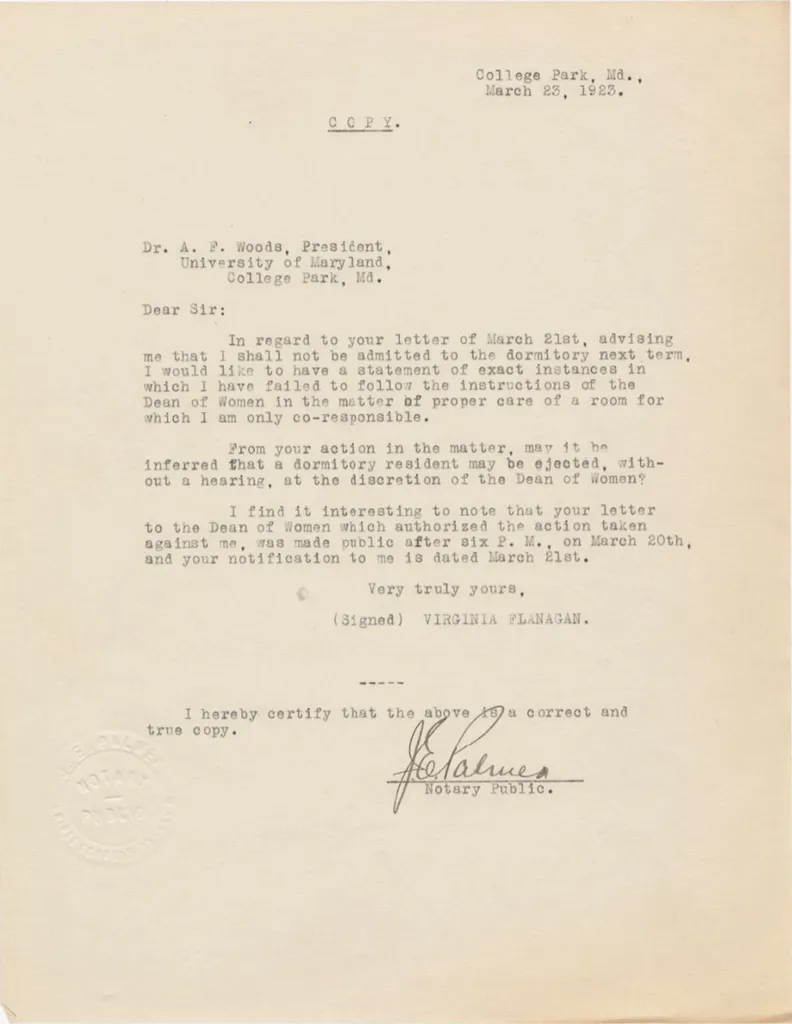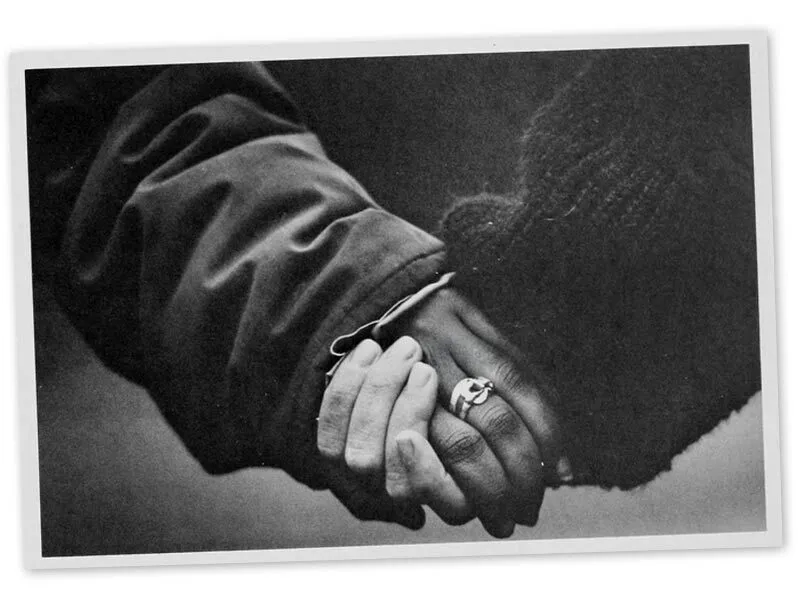- October 25, 2023
- By Sala Levin ’10
Violent skirmishes during the Vietnam War between police and student protesters may be the University of Maryland’s best-known example of activism, but the history of campus protest is much longer—and more varied—than that.
“Rising Up: 100 Years of Student Activism for Justice and Civil Rights at the University of Maryland,” a University Libraries exhibit that opens today in the lobby of Hornbake Library, highlights protests led by Terps from marginalized communities.

Lae’l Hughes-Watkins, associate director for engagement, inclusion and reparative archiving, led a team of curators in assembling photos, T-shirts and sweatshirts, posters, fliers, correspondence and oral histories from actions related to racism, undocumented students, sexism, the rights of Indigenous students and other issues.
“When you look around campus and you see that we have our LGBTQ+ Equity Center, the U.S. Latina/o studies minor, our African American studies program, all of our cultural spaces on campus—students have really been a part of the work and leadership that got us the places and spaces that we now have and enjoy on campus,” said Hughes-Watkins.
The exhibit was partly inspired by the 2020 movement for racial justice. Seeing the deep impact the national reckoning had on students, and the extent to which many were involved in planning demonstrations and protests, motivated Hughes-Watkins to delve into the history of student activism at the university, she said.
While chants and marches have been common tactics, some demonstrators have gone for cozier methods. One protest featured in “Rising Up” is the 1992 “kiss-in” by 10 same-sex couples, organized by the gay rights group Queer Nation at the Stamp Student Union to affirm their right to exist safely.
[Students’ Podcast Amplifies Issues of Forgotten Feminist Magazine]
The exhibit, organized by decade, also confronts the university’s origins as the Maryland Agricultural College, and its founder, slaveowner Charles Benedict Calvert, as well as segregation in the institution’s past.

"We want to provide visitors an immersive experience that will allow students, faculty, staff, community members and others to learn about the unvarnished truth of our past and feel inspired by the role student organizing has played in forging a stronger and more inclusive community,” said Hughes-Watkins.
Hughes-Watkins hopes that the exhibit, which includes speakers that play oral histories, will get people digging through their own photo albums and paper piles, looking for archival chestnuts. People who find snapshots of campus protests, sepia-toned flyers or who want to share their stories are encouraged to contribute to the Libraries’ Reparative Histories project, which aims to bolster institutional records about the histories of marginalized groups on campus.
“The stories highlighted in the exhibition remind us that our brightest days are always somewhere on the horizon," said Hughes-Watkins.
UMD Libraries will host an opening reception for “Rising Up” this afternoon from 4:30 to 6:30 p.m. in Hornbake Library. Registration is encouraged but not required.
A version of this story is featured in the Fall 2023 issue of Terp magazine. Find all the stories online at terp.umd.edu.
Topics
Campus & CommunityUnits
University Libraries